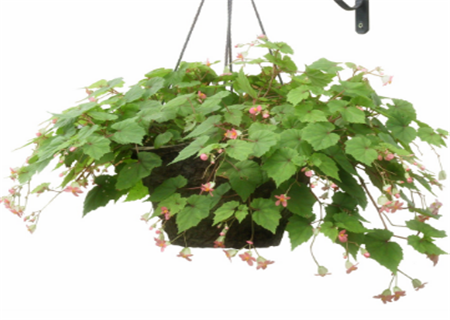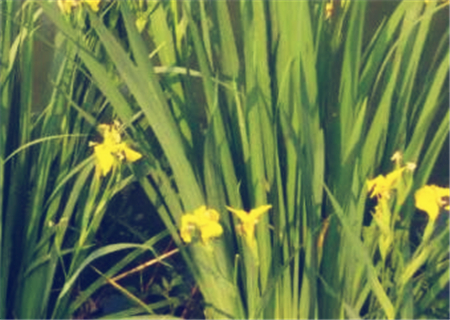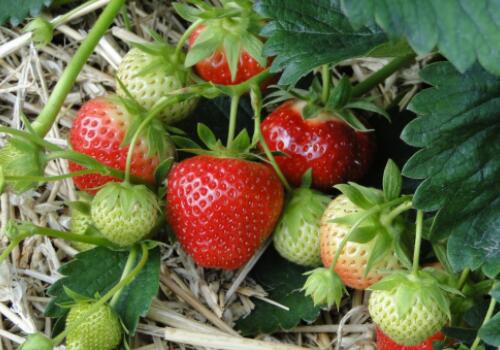How to maintain hydroponic hanging orchids? What are the breeding methods and matters needing attention?
Hanging orchid is a more common plant, also known as weeping pot grass, hanging orchid, fishing orchid, bluegrass, folding crane orchid, air guard. The plant has the effect of purifying air, and the whole plant can be used as medicine. So how to maintain the hydroponic orchid in life? What are the breeding methods and matters needing attention of hanging orchids?
First, how to maintain hydroponic hanging orchids?
The hydroponic hanging orchid has indoor ornamental property. Putting the seedlings in a clean water tank can maintain the ornamental value for two or three years. Can properly raise goldfish, so that flower fish live in harmony, both can enjoy flowers and fish, there is a very high ornamental value.

1. Selection of hydroponic hanging orchid utensils
Hanging orchid is very suitable for hydroponic culture, the demand for containers is not high, you can choose single-layer or double-layer glass containers, or you can choose containers according to your personal preferences.
2. Prevention and control of diseases and insect pests in hydroponic culture.
Cymbidium is not easy to suffer from diseases and insect pests, but the root system immersed in too deep water will lead to root rot, so attention should be paid to control the depth of root abuse. Take a look at the rotten points, soak with methyl topiramate 800 times, then put it in the air to hurt. The new roots were induced again after drying.
3. Cymbidium can be directly cut off its branches and leaves and cultured in clean water. You can also dig out the orchid planted in the soil gently, clean up the soil associated with the roots with clean water, be careful not to hurt its roots during the whole operation, trim the roots after cleaning, and remove all the rotten roots and diseased roots. if there are yellow leaves, leaves of diseases and insect pests should also be removed, leaving sturdy, brightly colored branches and leaves, and finally put into clean water.
4. If it is transplanted from the soil, it is necessary to pay attention to the changes of its roots. At this time, it is necessary to cut off the rotten roots when changing water. When the newly grown root system reaches 3 cm to 5 cm, you can add nutrient solution, and the amount of nutrient solution should not be too large.
The addition of nutrient solution can be combined with the time of changing water, and its dosage can be controlled according to the description of the nutrient solution. At the same time, the leaves can be sprayed with diluted nutrient solution, about once every 3 days.
Second, the culture method of Cymbidium
The hanging orchid likes the humid environment, should maintain the high air humidity, needs to keep the basin soil moist during the growth period. However, due to the storage of a large amount of water in its fleshy roots, it has a strong ability to resist drought and will not die if it is not watered for several days. It should be well watered in summer and spray water on the branches and leaves every evening to keep the air moist. Move indoors in the first ten days of October and put it in the sun. When the temperature is high at noon every 5-7 days, spray and wash the branches and leaves with water close to room temperature. But the basin soil should be on the dry side.
In the vigorous growth season of spring and autumn, thin liquid fertilizer is applied every 15 days or so, with fully mature cake fertilizer and water as good as 10%-15%; nitrogen, phosphorus and potassium fertilizer solution with a concentration of 0.1%-0.3% can also be applied; topdressing should be stopped during high temperature in summer and dormancy in winter. Flower and leaf varieties should apply less nitrogen fertilizer, otherwise the white or yellow markings on the leaves will become lighter, affecting the ornamental effect.
Matters needing attention of hanging orchids
1. Cymbidium is a kind of fertilizer-tolerant plant with yellowing leaves due to insufficient nutrients and easy to scorch head senescence.
two。 It is better to be semi-overcast in spring and autumn, and it is appropriate to see light in the morning and evening in summer, shade at noon, avoid the sun exposure, and see more sunshine in winter. During the growing period, the basin soil is moist and cannot accumulate water.
3. The basin is changed once a year in spring (mid-late March).
4. Avoid direct sunlight in summer. Always keep the basin soil moist. Irrigate liquid fertilizer every 15-20 days.
5. After mid-October, hang the flowerpot indoors close to the sunny surface and easy to watch. In winter, the basin soil should be watered after it is dry at a depth of about 1 cm.
6. When the climate is dry in summer and autumn, measures such as spraying water should be taken to increase the air humidity around the plant.
7. In winter, the basin soil should be kept dry. Too damp basin soil will induce Botrytis cinerea and rotten leaves.
8. The indoor light should not be too dark, otherwise the leaf color will become light or yellowish green.
9. Watering should avoid pouring into the plant heart, otherwise it is easy to cause tender leaves to rot.
The above is the relevant knowledge of the maintenance of hanging orchids that I have sorted out for you. I hope I can help you.
Time: 2019-04-08 Click:
- Prev

How does traditional Chinese medicine calamus grow with soil? Can I get hydroponic culture? What if the leaves turn yellow?
Acorus calamus is also called white calamus and Tibetan calamus. Born on the edge of a swamp, stream or paddy field. It is a spiritual grass that can prevent epidemic disease and exorcise evil spirits in traditional Chinese culture. There is a custom of inserting gladiolus leaves and moxa bundles under the eaves of the Dragon Boat Festival. So more and more people begin to plant calamus, so how to cultivate calamus with soil? Can it be hydroponically cultured?
- Next

How many times a year can strawberries be planted? What is the cause and prevention of abnormal fruit?
Strawberries, also known as pineapple strawberries, are widely cultivated in South America, China, Europe and other places. Strawberry has high nutritional value, contains a variety of nutrients, and has health care effect. How many times a year does the average strawberry plant bear fruit? What is the cause and prevention of abnormal fruit? Generally grown strawberries can bear fruit several times a year.
Related
- Fuxing push coffee new agricultural production and marketing class: lack of small-scale processing plants
- Jujube rice field leisure farm deep ploughing Yilan for five years to create a space for organic food and play
- Nongyu Farm-A trial of organic papaya for brave women with advanced technology
- Four points for attention in the prevention and control of diseases and insect pests of edible fungi
- How to add nutrient solution to Edible Fungi
- Is there any good way to control edible fungus mites?
- Open Inoculation Technology of Edible Fungi
- Is there any clever way to use fertilizer for edible fungus in winter?
- What agents are used to kill the pathogens of edible fungi in the mushroom shed?
- Rapid drying of Edible Fungi

